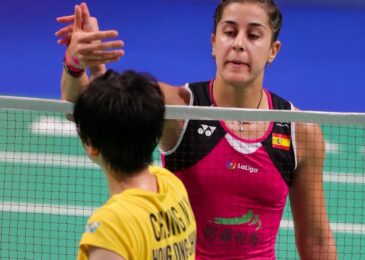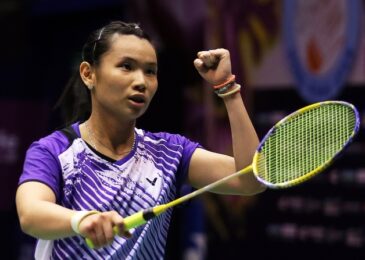By [Your Name]
Introduction
In the world of badminton training, repetitive drills with multi-shuttle feeding have long been seen as the foundation for skill improvement. However, former Danish national coach Kenneth Larsen presents a thought-provoking argument against this traditional approach. At the BWF Coaching Conference, Larsen challenged the idea of mindless repetition and advocated for an alternative method based on awareness, reflection, and adaptability. His insights shed light on the limitations of purely technical practice and emphasize the importance of problem-solving and decision-making in training. Let’s explore Larsen’s approach and its potential impact on badminton coaching.
Bạn đang xem: Badminton Pan America
Rethinking Traditional Training Methods
Larsen questioned the effectiveness of repetitive training by using the example of the spinning net shot. While standard techniques drilled through repetition may work in controlled situations, Larsen argued that they fail to prepare players for the dynamic nature of real matches. Instead, he emphasized the need to develop players’ problem-solving skills and encourage them to make the necessary adjustments in response to changing game situations. According to Larsen, awareness and adaptability are key to improving performance on the court.
The Concept of Split Vision
Xem thêm : News | BWF Olympics
One of the crucial aspects Larsen discussed is the concept of split vision. He highlighted the importance of players being able to anticipate and respond to shifting positions of their opponents. Split vision, as Larsen called it, involves players watching out of the corner of their eye and making instantaneous decisions on where to place their shots. By training players to develop split vision, coaches can equip them with the skills needed to make effective choices during a match.
Implementing Reflective Practices
Larsen, an associate professor of sport science, attributes Denmark’s success in badminton and other sports to their reflective approach in training. He aims to create a culture of independence and decision-making among players, rather than relying solely on instructions from coaches. By engaging players in a dialogue and encouraging them to come up with their own answers, Larsen believes he can help them develop independence, reflective skills, and self-esteem. This approach is applicable to players of all levels, from juniors to elite athletes.
FAQs
How can players benefit from the reflective approach in badminton training?
The reflective approach in badminton training enables players to develop problem-solving skills, adaptability, and split vision. It empowers them to make their own choices during a match and handle dynamic situations with confidence.
Can the reflective approach be implemented with large groups of players?
Xem thêm : BWF News
Yes, the reflective approach can be implemented with large groups of players. It doesn’t require players to reflect on every single stroke but rather focuses on building awareness and developing the ability to handle different situations. Through consistent practice, reflection becomes automatic, allowing players to adapt quickly without panicking or being afraid.
Summary
In the world of badminton coaching, Kenneth Larsen challenges the traditional approach of repetitive training. Instead, he advocates for an approach that prioritizes awareness, reflection, and adaptability. By encouraging players to solve problems, make choices, and develop split vision, coaches can equip them with the skills needed to excel in dynamic match situations. The reflective approach fosters independence, reflective skills, and self-esteem among players, regardless of their level of expertise. Embracing this new perspective may lead to improved performance and a more holistic training experience in the world of badminton.
For more information, visit Carnegiecentre.com for the latest updates on badminton training techniques and insights.
Nguồn: https://carnegiecentre.com
Danh mục: Tin tức


